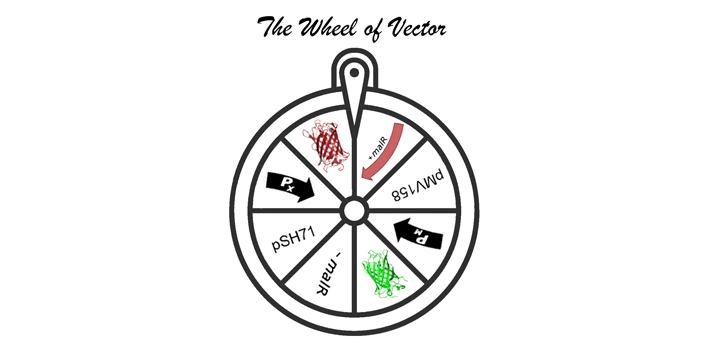Garay-Novillo JN et al. Front Microbiol. 2019
Labeling of bacterial cells with fluorescent proteins allows tracking the bacteria in competition and interactomic in vivo and in vitrostudies. During the last years, a few plasmid vectors have been developed aimed at the fluorescent labeling of specific members of the lactic acid bacteria (LAB), a heterogeneous group that includes microorganisms used in the food industry, as probiotics, or as live vectors for mucosal vaccines. Successful and versatile labeling of a broad range of LAB not only requires a vector containing a promiscuous replicon and a widely recognized expression system for the constitutive or regulated expression of the fluorescence determinant, but also the knowledge of the main features of the entire plasmid/host/fluorescent protein ensemble. By using the LAB model species Lactococcus lactis, we have compared the utility properties of a set of labeling vectors constructed by combining a promiscuous replicon (pMV158 or pSH71) of the pMV158 plasmid family with the gene encoding either the EGFP or the mCherry fluorescent protein placed under control of promoter PX or PM from the pneumococcal mal gene cluster for maltosaccharide uptake and utilization, respectively. Some vectors carrying PM also harbor the malR gene, whose product represses transcription from this promoter, thus enabling maltose-inducible synthesis of the fluorescent proteins. We have determined the plasmid copy number (PCN) and segregational stability of the different constructs, as well as the effect of these features on the fitness and fluorescence intensity of the lactococcal host. Constructs based on the pSH71 replicon had a high copy number (∼115) and were segregationally stable. The copy number of vectors based on the pMV158 replicon was lower (∼8-45) and varied substantially depending on the genetic context of the plasmid and on the bacterial growth conditions; as a consequence, inheritance of these vectors was less stable. Synthesis of the fluorescent proteins encoded by these plasmids did not significantly decrease the host fitness. By employing inducible expression vectors, the fluorescent proteins were shown to be very stable in this bacterium. Importantly, conditions for accurate quantification of the emitted fluorescence were established based on the maturation times of the fluorescent proteins.
Autores: Garay-Novillo JN, García-Morena D, Ruiz-Masó JÁ, Barra JL, Del Solar G.



